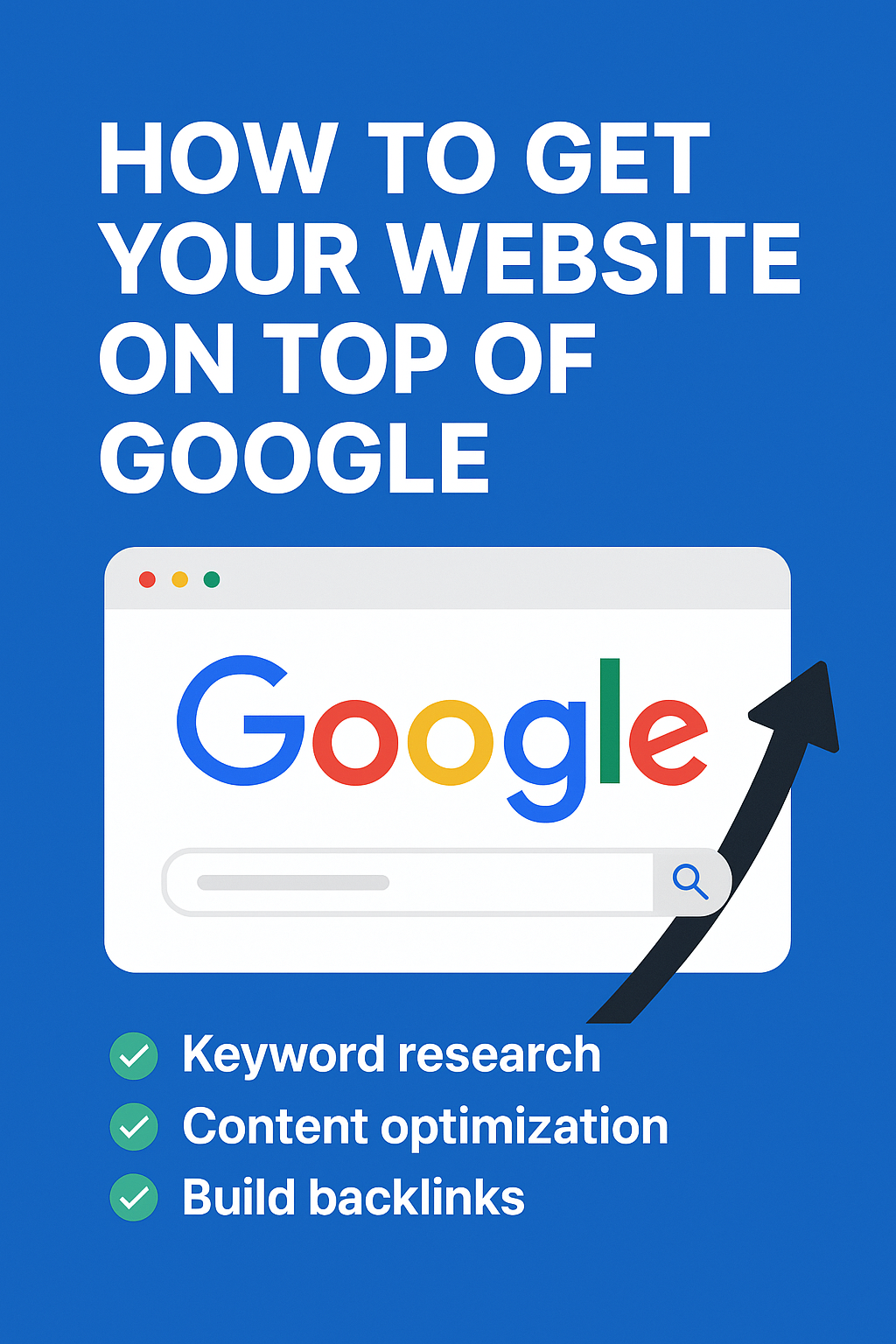Your cart is empty now.

How to Get Your Website on Top of Google | Proven SEO Strategies
Ranking at the top of Google is the dream of every website owner. Whether you run a small business, an online store, or a blog, appearing on the first page of search results can mean more visibility, more traffic, and ultimately more sales. But with so much competition online, how do you actually get your website to the top of Google?
In this guide, we’ll cover the essential strategies to improve your rankings and grow your online presence.
1. Understand How Google Ranks Websites
Google uses algorithms that consider hundreds of ranking factors. While the exact formula is secret, some of the most important signals include:
-
Relevance: Does your content match the user’s search intent?
-
Quality: Is your content valuable, well-written, and trustworthy?
-
Authority: Do other websites link to your site as a trusted source?
-
User Experience (UX): Is your website fast, mobile-friendly, and easy to use?
The better your website performs in these areas, the higher your chances of ranking.
2. Do Keyword Research
Keywords are the foundation of SEO. To rank higher:
-
Identify the terms your audience is searching for using tools like Google Keyword Planner, Ahrefs, or SEMrush.
-
Focus on long-tail keywords (e.g., “affordable real estate photography in Daytona Beach”) since they are less competitive and more specific.
-
Use keywords naturally in your content, titles, headings, and meta descriptions.
3. Create High-Quality Content
Google rewards websites that publish useful, original, and engaging content. To stand out:
-
Write blog posts, guides, and tutorials that answer real questions.
-
Use a mix of text, images, videos, and infographics to keep readers engaged.
-
Update your content regularly to keep it fresh and relevant.
Remember, content is king — it’s one of the strongest ranking factors.
4. Optimize On-Page SEO
Small details on your website can have a big impact on rankings. Make sure you:
-
Include keywords in your title tags, meta descriptions, and headers.
-
Use short, descriptive URLs (e.g.,
www.example.com/seo-tipsinstead ofwww.example.com/page?id=123). -
Add internal links to connect related pages.
-
Optimize images with alt text and compressed file sizes.
5. Improve Your Website Speed and Mobile Friendliness
Google prioritizes websites that load quickly and work well on mobile devices.
-
Use tools like Google PageSpeed Insights to test and improve your site speed.
-
Choose a reliable hosting provider.
-
Use a responsive design so your site looks great on all devices.
6. Build High-Quality Backlinks
Backlinks (links from other websites to yours) are one of the strongest ranking signals.
-
Reach out to blogs, industry directories, and local businesses for link opportunities.
-
Guest post on reputable sites in your niche.
-
Create share-worthy content like infographics, statistics, or case studies.
The more trustworthy websites that link to you, the more Google sees your site as an authority.
7. Use Local SEO (If Applicable)
If you run a local business, appearing in local search results is crucial.
-
Claim and optimize your Google Business Profile.
-
Get listed on local directories and citation sites.
-
Use location-based keywords (e.g., “photographer in Palm Coast, FL”).
8. Monitor and Adjust
SEO isn’t a one-time effort — it’s an ongoing process.
-
Use Google Analytics and Google Search Console to track performance.
-
Monitor your keyword rankings.
-
Keep testing, improving, and updating your strategy.
Final Thoughts
Getting your website on top of Google doesn’t happen overnight, but with consistent effort and the right strategies, it’s absolutely achievable. Focus on creating great content, optimizing your site, and building authority over time. The more value you provide to users, the more Google will reward your site with higher rankings.



